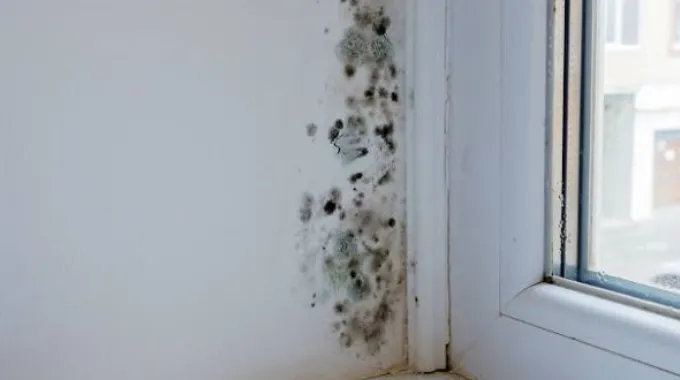Last Updated on March 20, 2023
A drywall is a plasterboard or gypsum board used to form a wall’s interior structure. The material is great for soundproofing and insulation, but drywall can be disastrous if it gets wet.
This weakens the wall’s structural integrity, becoming prone to cracking or breaking apart completely. This looks unsightly, causes damage, and increases the risk of water seeping into other parts of the house, leading to more significant damage if not treated immediately.
So what should you do if your drywall gets wet? How can you prevent it from happening in the first place? In this blog post, we will discuss why it is important to know about the condition of your drywall, whether it’s dry or wet, and how you can benefit from knowing about the condition of your drywalls.
We will also discuss strategies for preventing wet drywall and explain why prevention is essential. Learn more about how you can protect your home and save time and money by proactively drying out your drywall.
Why Is It Bad If Drywall Gets Wet?

Deterioration of the Sheetrock
The deterioration of the sheetrock due to moisture retention can cause a variety of issues that can have a negative effect on the integrity and appearance of your walls.
Expansion and weakening of the material is one issue that can arise, which in turn causes softening and fragility of the surface, as well as damage to adhesives and fasteners.
These changes are typically visually detectable as well, such as bubbles or discoloration. Furthermore, it can create an ideal environment for mold growth or other forms of infestations from pests.
Structural Deterioration
Structural deterioration due to wet drywall is an incredibly serious problem that must not be ignored. Softening, buckling, and warping of the drywall are all signs that moisture has seeped into its core.
This moisture absorption can lead to delamination and expansion which will often result in cracking or peeling paint or wallpaper. Especially concerning is false ceiling damage from leaking plumbing or overflowing bathtubs.
This water intrusion could cause fractures in the drywall over time as well as create structural instability.
Risk of Mold Growth Due to Moisture Retention
The potential for mold growth as a result of moisture retention is a major concern when it comes to wet sheetrock; if not addressed quickly, it can have long-lasting implications on one’s health.
In addition to providing a breeding ground for fungi, inadequate ventilation in the home can further promote mold growth throughout the building’s structure.
Different types of mold may grow in wet sheetrock, including but not limited to black mold, which has been linked to respiratory problems like asthma attacks, allergies, rashes, sinus inflammation or infections, headaches, and even memory loss.
Impact on Insulation Performance
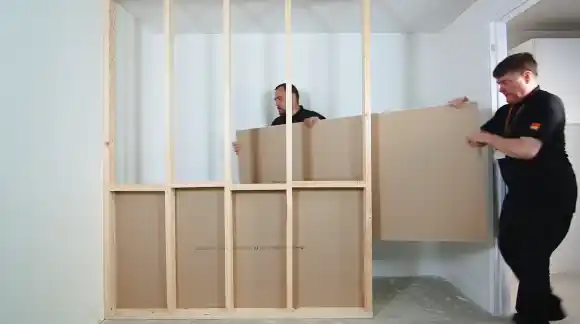
The impact on insulation performance from wet and dry rock should also not go unnoticed. When exposed to moisture, it compromises thermal protection properties resulting in a reduction in overall efficiency both in heating or cooling costs and energy consumption not ideal.
Also worth noting are certain indicators that can help you identify when there is excessive moisture present inside your walls. These include swelling around window frames or doors along with visible patches through wallpaper or plasterboard etc.
Insect Infestation
Insect infestation is another potentially negative effect caused by wet drywall. his issue often goes hand-in-hand with other problems, such as rotting woodwork or window frames, etc.
Common culprits include termites (which cause considerable damage around timber framing), carpet beetles (which feed off natural fibers like wool), cockroaches (which spread disease & bacteria), bed bugs (which feed off your blood while you sleep), silverfish (which eat paper & glue) and ants (which are harmful & invasive).
If you notice any signs of insects, then you should take action immediately by contacting a professional pest control company.
Health Risks from Mold Spores, Dust Particles, or from Moisture Intrusion Problems
The presence of wet drywall in any interior space poses a serious health risk to those who inhabit it. In such a situation, moisture provides a breeding ground for mold spores and dust particles, both of which can cause adverse reactions in people with asthma, allergies, and other respiratory conditions.
These reactions may range from minor allergy symptoms like sneezing and coughing to more serious issues such as brain damage caused by long-term exposure to toxic molds.
Furthermore, the air quality in the area may be severely compromised due to the presence of these particles, making it difficult for individuals to breathe properly. It can also lead to an increased risk of developing respiratory diseases.
Discoloration of Paint or Wallpaper
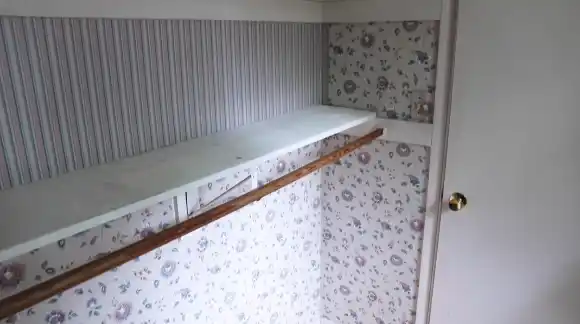
Wet drywall can have severe implications on the paint or wallpaper in an interior space. When moisture seeps into walls, it causes paint to bubble up and peel away from them, resulting in discoloration and blotchy spots all over the surface area.
This effect is even more visible when dealing with wallpaper – instead of merely peeling off the walls, wallpaper might start to come off completely due to the buildup of moisture within its layers.
In either case, fixing this problem would require costly repairs such as repainting entire sections or removing all traces of wallpaper from affected areas altogether.
This could easily become a huge expense if left unchecked for too long, as mildew and mold may grow on wet surfaces due to humidity levels within them being too high.
Causes of Drywall Getting Wet
Poorly Sealed Walls & Caulking
Wet drywall is often caused by inadequate sealing and caulking around the walls. Unsealed walls can allow moisture and water to seep in through gaps, crevices, and cracks and cause the drywall to become wet.
Caulking is used to seal any openings or joints in a wall that may be prone to water infiltration or moisture accumulation. Poorly installed caulking can weaken over time, allowing moisture and water to penetrate the wall and cause wet drywall.
In addition, if the caulk is not properly sealed with paint or other sealants after installation, it can also create openings for moisture to enter. Lastly, improper sealing or caulking of exterior walls may also allow rainwater or snowmelt to enter your home, leading to wet drywall.
Roof Leaks or Flooding
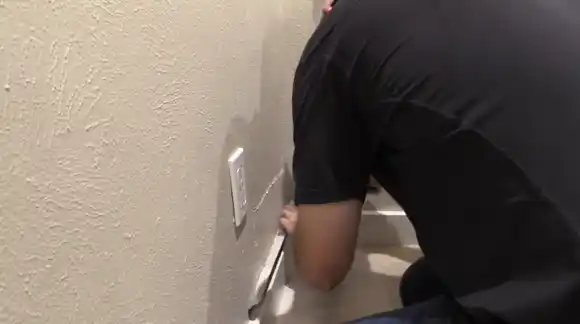
Roof leaks are another common source of wet drywall in many homes. When roofing materials such as shingles wear down due to age or other reasons, they can become more prone to cracking and allowing water into the house.
Additionally, any loose nails on the roof that have come out over time may create an opening that allows rainwater inside your home, ultimately causing wet drywall.
Flooding due to heavy rainstorms is also a frequent cause of wet drywall, as it will inevitably lead to water entering through doors, windows, or even from below ground level if your home has a basement or crawl space.
Inadequate Ventilation (High Humidity)
Inadequate ventilation in certain areas of your home can lead to high humidity levels, which can also cause wet drywall. Humidity is known for its ability to evaporate easily into liquid water droplets, which coat surfaces like walls with a moist layer.
If your home has room corners with poor airflow or poorly insulated walls, this trapped air could make these areas more prone to humidity buildup and consequently lead to wet drywall due to its ability for easy evaporation into liquid droplets that stick onto wall surfaces.
Plumbing Problems (Leaky Pipes)
One of the most common causes of wet drywall is plumbing problems, such as leaky pipes. When a pipe has a crack or gap in the surface, water can begin to seep through and saturate the drywall, which may result in discoloration, mold, and rot.
In some cases, water from the pipe may have enough pressure behind it to cause other damage within the wall cavity as well. It is important to inspect pipes regularly for any signs of leaks and to fix them immediately if they are found.
Overflowing Sinks or Tubs or Toilets
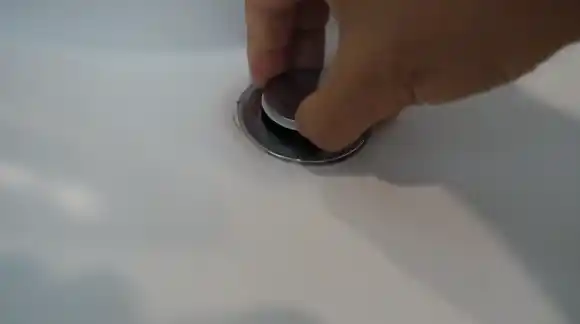
Another common cause of wet drywall is overflowing sinks, tubs, or toilets. When these fixtures become full, either due to a clog in the drain line or an increase in water pressure from a large amount of water being used at once, they can overflow onto nearby walls and floors.
This will cause wet drywall, eventually leading to discoloration and mold growth if not treated promptly. To prevent this from happening, it is important to keep an eye on plumbing fixtures and make sure they are regularly checked for clogs or other blockages.
A/C Condensation Leaks into Walls
A/C condensation can also be responsible for wet drywall in some areas of your home. As air conditioners cool down the air inside your home during hot summer months, moisture condenses on the unit’s evaporator coil and then drips into walls near heating ducts and other cooling components located nearby.
This moisture can eventually build up inside walls over time and saturate the drywall with water, which leads to discoloration, mold growth, and other associated issues.
Improper Insulation and Vapor Barriers around Exterior Walls
Improper insulation around exterior walls can also result in wet drywall caused by temperature fluctuations between outside and inside air temperatures that allow moisture-laden air from outside into interior spaces where it can condense into liquid form on colder interior surfaces like walls causing them to become wet.
Additionally, inadequate vapor barriers installed between insulation layers can contribute by allowing warm moist air from inside your home to penetrate insulation for cold exterior surfaces, leading to condensation and resulting in wet drywall issues over time.
Humidifiers Left On Too Long Too High a Setting
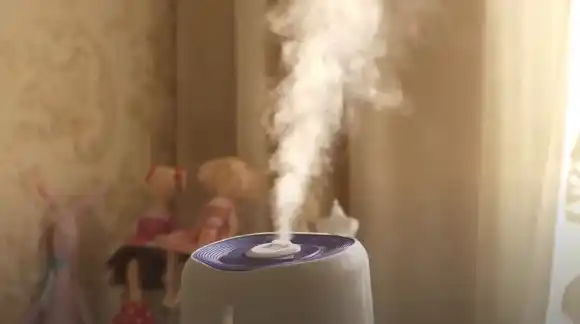
If humidifiers are left running for too long on high settings, they can introduce excessive amounts of humid air into homes. This air eventually condenses on cooler surfaces like walls, leading to discolored spots caused by excess moisture accumulation over time.
It is important to use humidifiers indoors and monitor humidity levels. Most models of humidifiers include a hygrometer. You should adjust the settings on your humidifier so that you do not introduce too much humidity into your home, which could lead to moisture build-up problems.
You can help prevent excess moisture build-ups by regularly ventilating your home with fresh air intakes and exhaust fans that can exchange moist indoor air with drier outdoor air. Doing so will reduce the likelihood of wet drywall problems in your home.
Fire Sprinkler System Malfunctions
Among the other causes of wet drywall is a malfunctioning fire sprinkler system. This happens when a malfunction causes the sprinklers to come on unexpectedly and spray water onto surrounding surfaces, including walls.
Homeowners should ensure regular maintenance checks on their fire sprinkler systems to prevent any errors from causing further damage. Any errors should be identified and corrected quickly.
Additionally, people should avoid leaving any combustible materials near their sprinkler systems as these items can increase the risks of accidental activation occurring during an emergency situation.
Prevention Methods to Prevent Drywall from Getting Wet
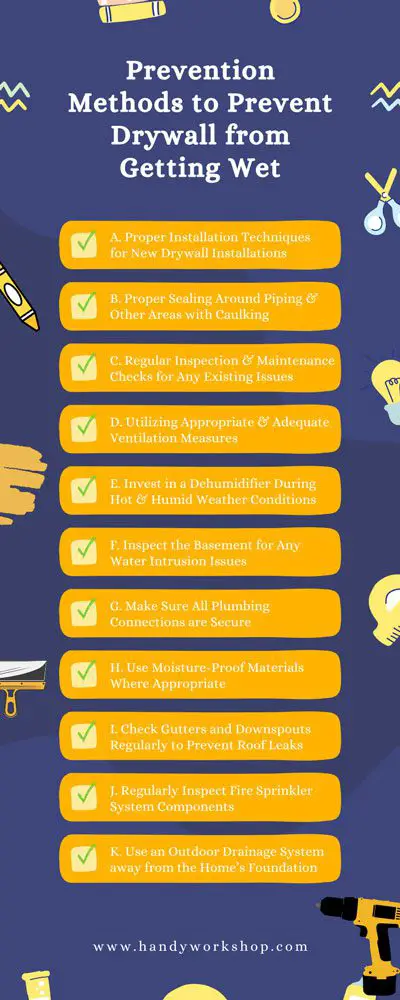
A. Proper Installation Techniques for New Drywall Installations
The installation of new drywall requires proper techniques to prevent water damage. This includes ensuring that all of the components are correctly fitted together, such as ensuring a tight bond between the drywall and any surrounding framing.
When installing new drywall, seal all seams, gaps, and joints using a joint compound or caulk. Additionally, it is important to waterproof the bottom edge by running a bead of silicone caulk along the wall plate.
Lastly, applying a coat of paint with an oil-based primer on all surfaces can further protect moisture from entering the walls.
B. Proper Sealing Around Piping & Other Areas with Caulking
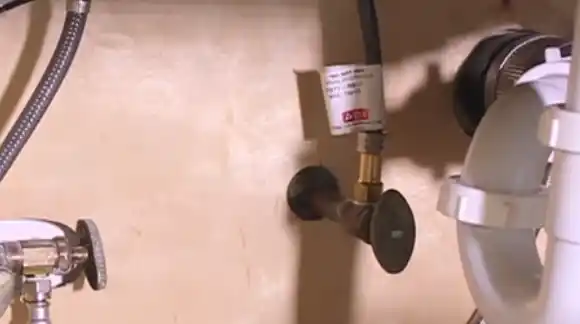
Proper sealing around piping and other areas with caulking is also an effective way to prevent water from entering your wall system.
Caulking should be used to fill in any cracks or crevices where water may come into contact with your drywall. It is important to regularly inspect for gaps around pipes, vents, and corners where moisture may enter and apply to caulk accordingly.
Additionally, it is a good idea to use a waterproofing sealant when caulking around sinks and toilets to help reduce the chances of water infiltration.
C. Regular Inspection & Maintenance Checks for Any Existing Issues
Regular inspection and maintenance checks are essential for preventing drywalls from getting wet due to potential issues with existing plumbing systems or other sources of moisture intrusion.
During these inspections, all fixtures, pipes, and seals should be inspected for cracks or signs of wear and tear that could lead to leakage if left unchecked.
In addition, any drains should also be checked regularly for blockage or poor drainage, which can result in standing water affecting the surrounding area, including nearby drywall surfaces.
D. Utilizing Appropriate & Adequate Ventilation Measures
Utilizing appropriate and adequate ventilation measures is also key in preventing excess moisture buildup within your walls, which can lead to wet drywalls over time.
The most common form of ventilation used in residential homes is exhaust fans which draw out hot air and humidity while replacing it with cooler air from outside.
It is important that you regularly maintain these fans in order to ensure they are performing effectively at removing moisture-laden air from inside the house while bringing in fresh air from outside without being blocked by dust particles or debris building up on the fan blades or grills over time.
E. Invest in a Dehumidifier During Hot & Humid Weather Conditions

Investing in a dehumidifier during hot and humid weather conditions can also be beneficial for preventing wet drywalls as well as other sources of possible water damage within your home.
Dehumidifiers help reduce the risk of mold growth inside your home by removing excess humidity from the air. High humidity can cause wood panels and drywall to become damp, leading to mold growth. Reducing the humidity in your home can prevent mold from growing and keep your family safe.
F. Inspect the Basement for Any Water Intrusion Issues
To prevent drywall from getting wet, it is important to inspect the basement for any flooding or dampness intrusion issues.
This includes checking for cracks in the foundation walls and windows, doors, and other openings for any signs of water infiltration. Additionally, look for moisture spots on the walls and floors, which could indicate a leaking pipe or other issues.
If any water intrusion is detected, it should be addressed promptly to avoid further damage. Additionally, take steps to ensure that all plumbing connections are secure and that there are no leaky pipes that may cause flooding or dampness in the basement.
G. Make Sure All Plumbing Connections are Secure
Ensuring all plumbing connections are secure is essential in preventing drywall from getting wet. This includes inspecting fittings and seals around pipes to ensure they are properly connected and not leaking.
Also, check under sinks and behind appliances for any signs of wear or corrosion. Additionally, use moisture-proof materials like plumber’s putty or silicone sealant where appropriate to reduce the chances of developing mold growth due to trapped moisture in these areas.
H. Use Moisture-Proof Materials Where Appropriate
Using moisture-proof materials can help protect drywall from getting wet by creating a barrier between the wall and potential sources of moisture, like overflowing sinks or plumbing leaks.
Moisture-proof materials can include things like waterproofing tape and caulking around windowsills and door frames, as well as metal flashing around roof eaves.
It is also important to install ventilation fans in bathrooms and laundry rooms where excess humidity can become trapped behind walls leading to mold growth or even rot if left unchecked.
I. Check Gutters and Downspouts Regularly to Prevent Roof Leaks
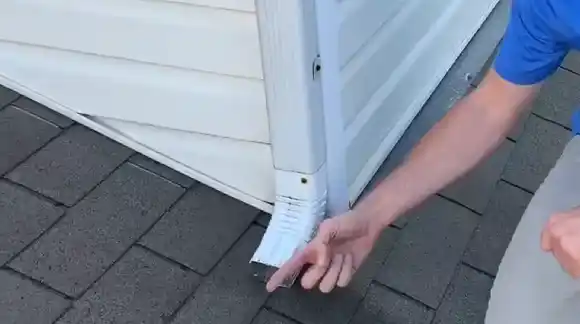
Regularly inspecting gutters and downspouts is another key preventative measure when it comes to keeping drywall safe from becoming wet due to a flooded roof or leaking gutters or downspouts system.
Make sure gutters are regularly cleaned out of debris, such as leaves and twigs, that can clog up drains causing water overflow, which can lead to leakage into your home’s interior walls causing damage over time if not dealt with quickly enough.
Inspect downspouts at least once a year for any signs of corrosion that could cause them to fail during heavy rainfall leading to extensive interior wall damage if left unaddressed for too long.
J. Regularly Inspect Fire Sprinkler System Components
A major part of preventing drywall from becoming saturated with water due to fire sprinkler systems is regular inspection of system components, including valves, heads, sprinklers, filters, hoses, etc. It is important to check that everything appears in good condition with no visible signs of rust.
All connections should be tightly fitted without room for air leakage, which can cause pressure problems and lead to flooding inside your home’s walls, damaging them severely over time if left unrepaired until it’s too late.
K. Use an Outdoor Drainage System away from the Home’s Foundation
Installing an outdoor drainage system, such as a French drain, helps direct runoff away from the house. This prevents flooding near building foundations and potential water intrusion inside walls.
Long-term exposure to moisture can cause damage to a home’s foundation and structure. The systems should be installed using gravel beds that slope away from the foundations.
The soil should slope at least four inches per foot away from structures. This will provide an effective defense against unwanted floods caused by heavy rains.
Can Mold Grow After the Leak is Fixed?
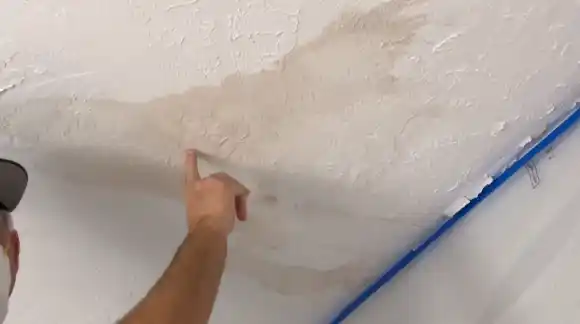
Yes, mold can grow after a leak is fixed. This is because the moisture from the leak can linger in the area and provide the perfect environment for mold growth.
Depending on the severity of the leak, it may take some time for all of the moisture to evaporate completely. It’s important to monitor the area for any signs of standing water or excessive humidity, as this could be an indication that mold is beginning to grow.
In addition, if there were any materials that were saturated by the leaking water, then those should be removed immediately to avoid any further issues.
Can You Reuse Drywall that Got Wet?
The answer depends on how wet and damaged the drywall was in the first place. If only a small area was affected by water and there wasn’t too much damage, then it may be possible to reuse the drywall after it has been thoroughly dried out.
However, if there are large areas that have been affected or if there is significant damage (such as warping). Then it would be best to replace it with an entirely new material for safety reasons.
Additionally, you will want to inspect both sides of the drywall for signs of mold before attempting to use it again if any is present, then a replacement will be necessary.
How Long does Drywall Take to Dry?
The amount of time that drywall takes to dry varies depending on several factors, such as how wet it got initially and what type of climate you are in (i.e., humidity and temperature).
Generally speaking, you should expect a drying period anywhere between 24 and 72 hours, possibly even longer, depending on how wet the material was initially.
You can help speed up this process by using fans or dehumidifiers in order to keep air circulating throughout the area and ensure that no excess moisture remains on surfaces or inside walls or ceilings.
How do You Know If Drywall has Mold?
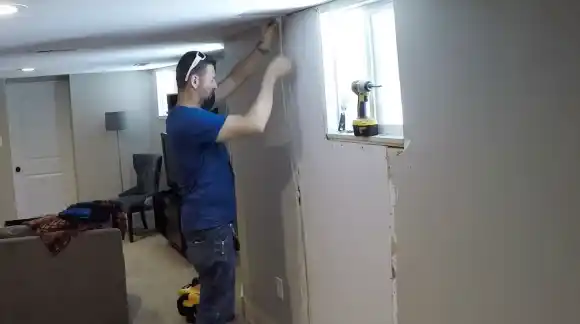
To determine whether or not drywall has mold growing on it, look for discoloration, such as dark spots or streaks, along with a musty smell which is often associated with mold growth.
You should also pay attention to other telltale signs, such as peeling paint or bubbling wallpaper, both of which may indicate hidden mold growth behind them.
If you suspect that your drywall might have mold growing on it, then you should contact an expert immediately to get a proper assessment done before attempting any kind of remediation yourself.
By doing so, they will be able to properly identify what kind of mold is present and provide advice on how best to tackle this issue safely without putting yourself at risk of additional exposure or contamination.
Conclusion
It’s now clear that wet drywall is a serious issue that needs to be avoided at all costs due to its damaging effects on both health and finances. We have discussed why it is so vital that you understand the condition of your drywall, especially when they’re dry or wet.
Not only does getting wet weaken its structural integrity, which leads to cracks and breaks, but it also increases the risk of water finding its way into other parts of your home and causing more significant damage if not addressed immediately.
To prevent such a problem from occurring, there are several strategies available such as waterproofing exterior walls before installing plasterboard sheets as well as sealing door frames from rainwater penetration, and repairing any leaks promptly with appropriate sealants or cement mixtures.
Furthermore, regular damp proofing treatments should be conducted, especially for areas subject to frequent rainfall or flooding events which could maximize prevention efforts against wet drywall hazards in your home or business premises.
Taking these precautions seriously will help minimize any damage caused by water infiltration, thus keeping you safe and ensuring financial security.
